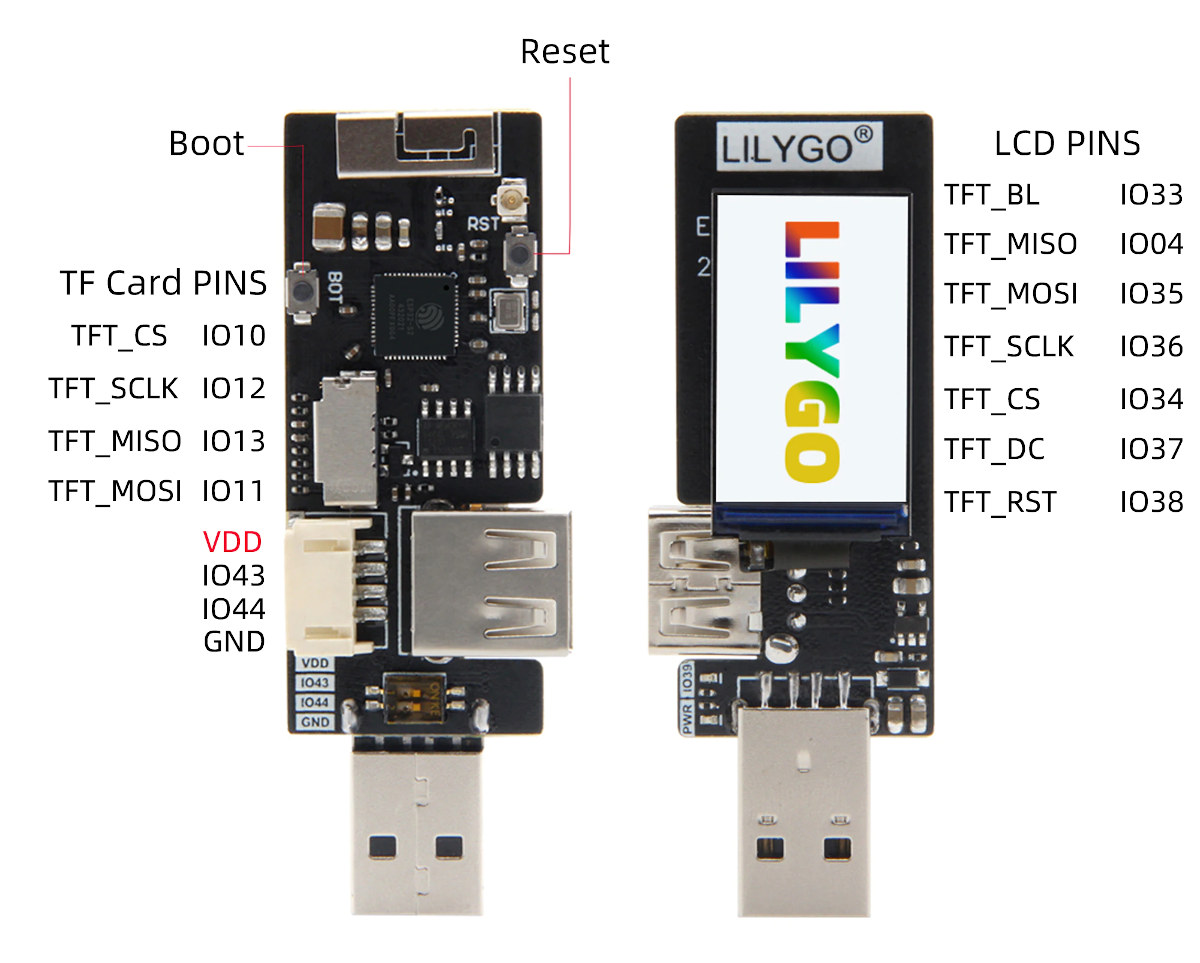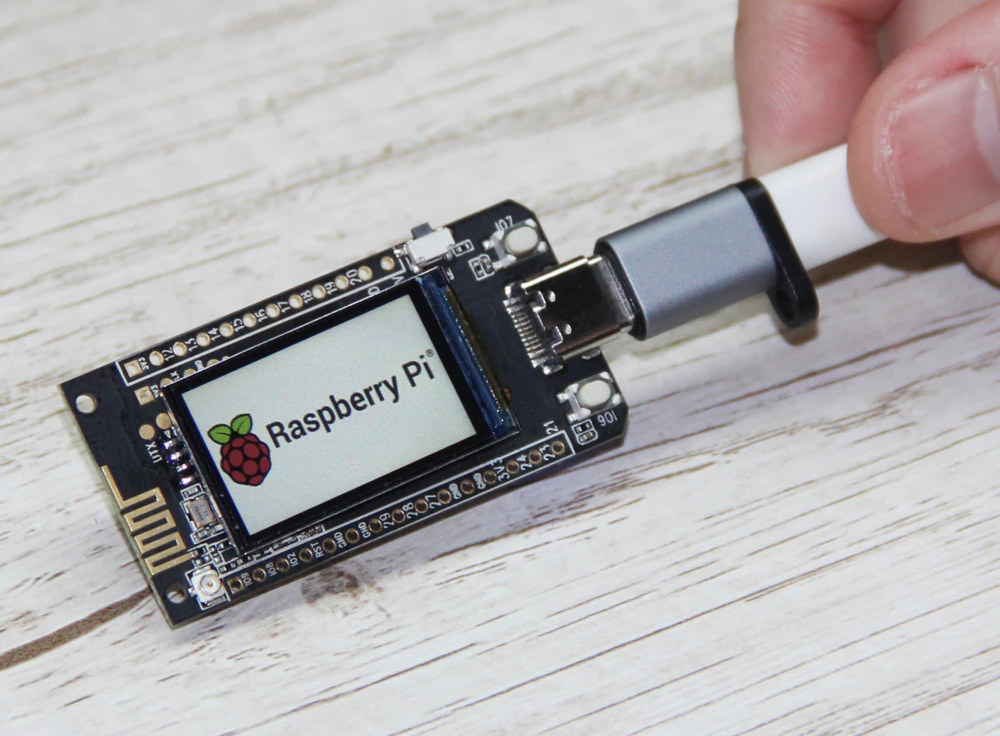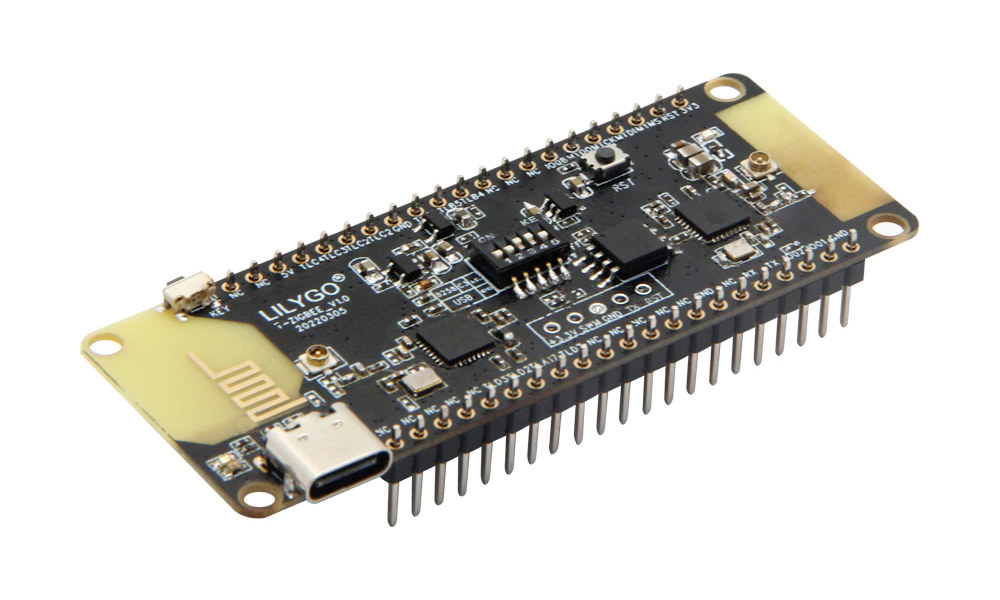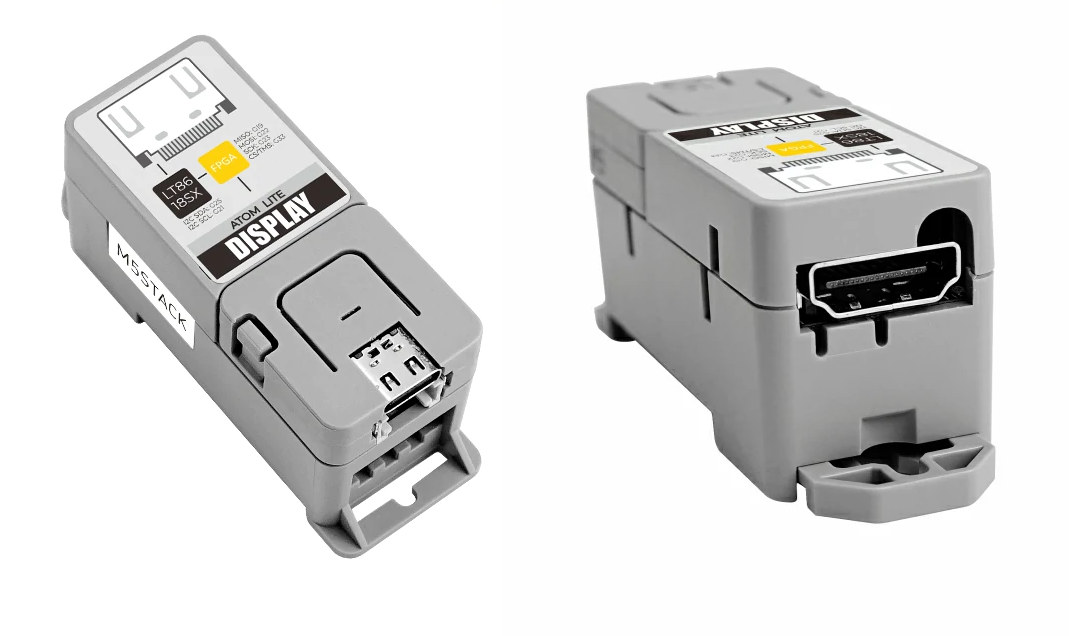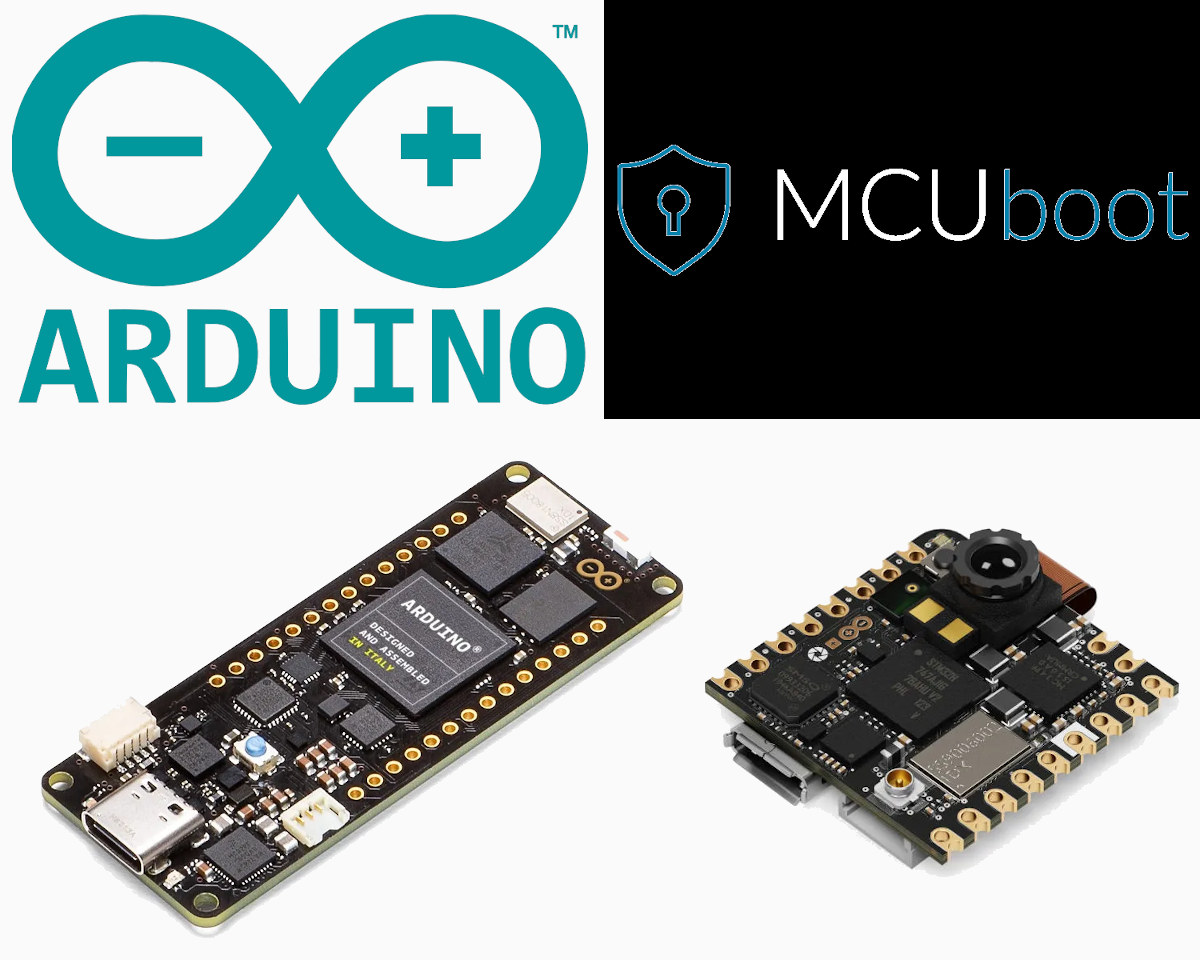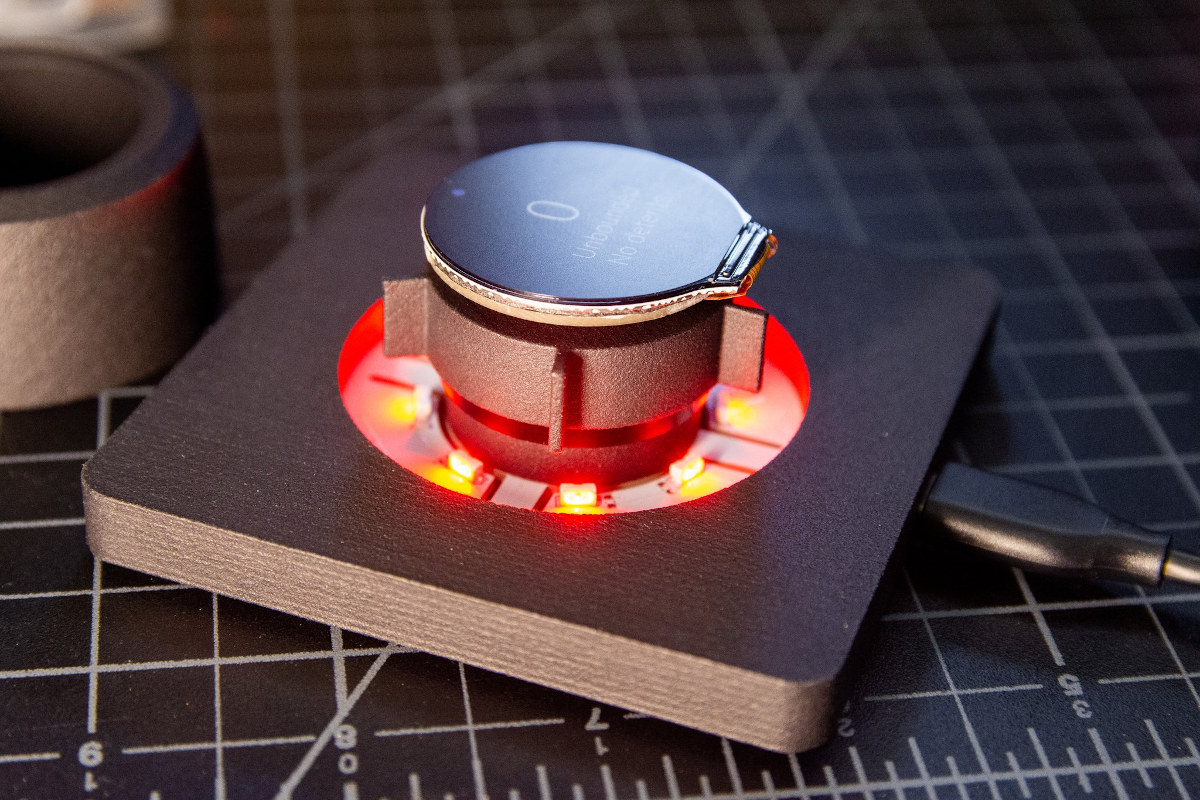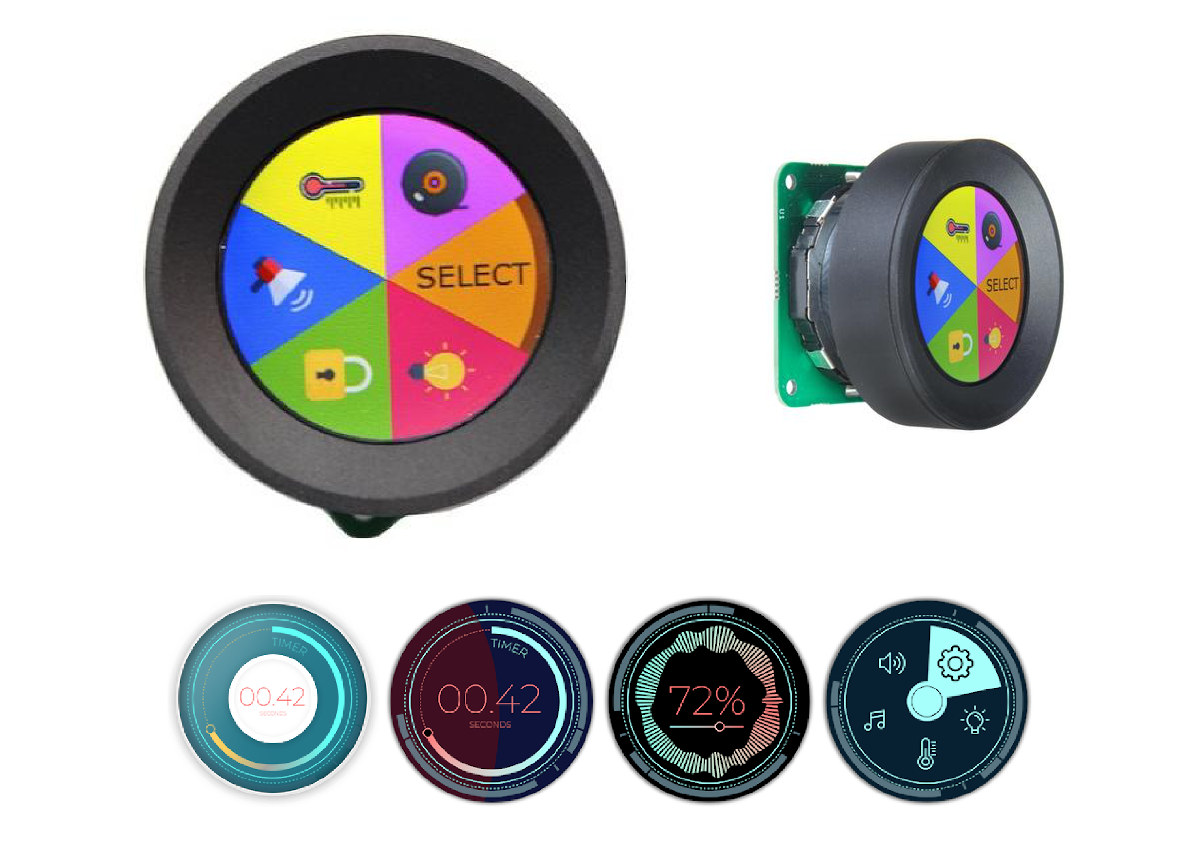LilyGO has been very busy in recent weeks, and their latest product is the “T-Dongle ESP32-S2” development board that looks very much like Espressif ESP32-S3-USB-OTG board development board but is equipped with the single-core WiFi-only ESP32-S2 processor instead of the dual-core ESP32-S3 SoC with WiFi 4 and Bluetooth 5.0. The T-Dongle ESP32-S2 board is designed for the development of USB applications and comes with USB OTG female and male ports, as well as the same 1.14-inch color display found on T-Display RP2040/ESP32 and T-PicoC3 boards. T-Dongle ESP32-S2 development board specifications: Wireless SoC – Espressif Systems ESP32-S2 single-core Xtensa LX7 processor @ up to 240 MHz with 320 kB SRAM, 128 kB ROM, WiFi 4 connectivity Antennas – 3D antenna, IPEX antenna connector Storage – MicroSD card socket Display – 1.14-inch full-color IPS LCD Display (ST7789V SPI controller) with 240 x 135 resolution USB 1x USB OTG female port to connect […]
LilyGO T-PicoC3 board merges RP2040 & ESP32-C3, integrates color display
LilyGO T-PicoC3 is a small development board combining Raspberry Pi RP2040 dual-core microcontroller with ESP32-C3 RISC-V MCU to add WiFi and Bluetooth LE connectivity and adds a 1.14-inch color display to the mix, plus several I/Os. We had previously other designs merging ESP32 and RP2040 with UDOO KEY, Arduino Nano RP2040 Connect, or the Pico Wireless Pack among others, but as far as I know, the T-PicoC3 board is the first to use Raspberry Pi RP2040 and ESP32-C3 RISC-V processor. LilyGO T-Pico3 specifications: Microcontrollers Raspberry Pi RP2040 dual-core Cortex-M0+ MCU with 264 KB of embedded SRAM Espressif Systems ESP32-C3 RISC-V processor with WiFi 4 and Bluetooth 5.0 LE connectivity Storage – 4MB SPI flash connected to RP2040 Display – 1.14-inch full-color IPS LCD Display (ST7789V SPI controller) with 240 x 135 resolution USB – USB Type-C port for power and programming (RP2040 / ESP32-C3) Expansion – 15-pin + 12-pin expansion […]
$10 T-Zigbee board combines ESP32-C3 and TLSR8258 for Zigbee 3.0, WIFi and BLE connectivity
LilyGO T-Zigbee board combines ESP32-C3 WiFi and BLE wireless microcontroller and Telink TLSR8258 multi-protocol wireless SoC compatible with BLE 5 Mesh, Zigbee, RF4CE, Thread, 6LoWPAN, HomeKit, ANT, and 2.4GHz proprietary standards. As I understand it, T-Zigbee is designed to act as a Zigbee to WiFi bridge, and is compatible with Zigbee2MQTT and Home Assistant, allowing easy integration into your home automation setup. Based on the hardware, I’d assume it may be usable as a BLE to MQTT gateway as well, in a fashion similar to GL.inet GL-S10 gateway, for people willing to work on the software/firmware. T-Zigbee specifications: Wireless MCUs Espressif Systems ESP32-C3 RISC-V processor with WiFi 4 and Bluetooth 5.0 LE connectivity Telink Semiconductors TLSR8258 (PDF product brief) Arm Cortex-M0 multiprotocol microcontroller @ 48 MHz with BLE 5 Mesh, Zigbee, RF4CE, Thread, 6LoWPAN, HomeKit, ANT, and 2.4GHz proprietary connectivity Antennas – 2x PCB antennas, 2x u.FL antenna connectors USB […]
M5Stack ATOM Display Lite adds HDMI output to ESP32 module
M5Stack ATOM Display Lite is a kit based on GOWIN Gowin GW1NR-9C FPGA and LT8618SX RGB to HDMI chip designed to add HDMI output up to 720p to the company’s ESP32-based M5Stack ATOM Lite module. The ATOM Lite sees the ATOM Display Lite kit as an SPI display, but the solution outputs the data to an HDMI monitor or TV with up to 1280×720 resolution and can be used for information display, menu board, and more. ATOM Display Lite specifications: Wireless IoT modules – M5Stack ATOM Lite ESP32-PICO-D4 based module with 240MHz dual-core CPU, 520KB SRAM, 4MB flash, Wi-Fi 4 and Bluetooth connectivity FPGA – Gowin GW1NR-9C (PDF datasheet) FPGA with 8,640 LUTs used to simulate SPI TFT-LCD data output, HDMI bridge – Lontium Semi LT8618SX RGB to HDMI chip with 24-bit color depth up to 1280×720 output @ 60 fps (optimized frame rate up to 12 ~ 16FPS) Misc- […]
FOMO (Faster Objects, More Objects) enables real-time object detection on low-end embedded systems
FOMO used to stand for “Fear Of Missing Out” in my corner of the Internet, but Edge Impulse’s FOMO is completely different, as the “Faster Object, More Objects” model is designed to lower the footprint and improve the performance of object detection on resource-constrained embedded systems. The company says FOMO is 30x faster than MobileNet SSD and works on systems with less than 200K of RAM available. Edge Impulse explains the FOMO model provides a variant between basic image classification (e.g. is there a face in the image?) and more complex object detection (how many faces are in the image, if any, and where and what size are they?). That’s basically a simplified version of object detection where we’ll know the position of the objects in the image, but not their sizes. So instead of seeing the usual bounding box while the model is running, the face position will be […]
Arduino releases secure bootloader based on MCUboot
Arduino has released a new bootloader based on MCUBoot to increase the range of features and firmware safety of Arduino products, with the first release targetting STM32H7 based Arduino Portenta and Nicla Vision boards from the Arduino Pro family. The release focuses on Arduino Mbed OS-based boards, but MCUboot is OS agnostic, and should also work with Zephyr, Nuttx, and Apache mynewt. The company has also made sure that the transition is easy and reused the existing OTA firmware upgrade process in place on Arduino boards. MCUboot Arduino highlights: Signed and encrypted updates – MCUboot has support for encrypting/decrypting images on-the-fly while upgrading. It will also check if the computed signature is matching the one embedded in the image before booting a sketch. Confirm or revert updates – After an update, the new Sketch can update the content of the flash at runtime to mark itself as OK. If everything […]
SmartKnob View is a DIY haptic input knob with WiFi and Bluetooth connectivity
Soon after writing about RoenDi rotary encoder with a built-in color display, readers pointed me to SmartKnob View, a similar-looking project but featuring an ESP32 module for WiFi and Bluetooth connectivity, plus software-configurable end-stops and virtual detents. The latter is enabled through a brushless gimbal motor paired with a magnetic encoder to provide closed-loop torque feedback control. Just like RoenDi, SmartKnob View comes with a 240×240 round color display but adds tactile feedback so you can change the menu when pressing the display. SmartKnob View specifications: Wireless module – LilyGO Tmicro32 Plys based on ESP32-PICO-V3-02 WiFi and Bluetooth LE SoC (May be changed to ESP32-S3-MINI-1 to enable USB HID support, once Arduino core supports it) Display – GC9A01 1.28-inch 240×240 round LCD covered by a 39.5mm watch glass on rotor Motor – BLDC gimbal motor, with a hollow shaft for mechanically & electrically connecting the LCD USB – 1x USB […]
RoenDi is a rotary encoder with a color display (Crowdfunding)
RoenDi is a rotary encoder with an integrated round color display. Based on an STM32L4 MCU, it can be programmed with the STM32CubeIDE or the Arduino IDE, and be used as an information display, an IoT controller, a locking mechanism, as well as in audio applications. RoenDi specifications: MCU – STMicro STM32L433 Arm Cortex-M4 microcontroller @ 80 MHz with 256 KB flash memory Storage – 128 Mbit SPI NOR flash Display – Round 1.28-inch TFT LCD display with 240 x 240 resolution, up to 262K colors Rotary Encoder – 15 pulses / 30 detents USB – Micro USB connector I/Os – Breakout pads for peripherals: I2C, GPIO, PWM, CAN; 5V tolerant Debugging – Adaptor board and cable for ST-LINK Misc – BOOT boot, RTC (built-in into STM32 MCU) Power Supply – 3V to 5V DC input, 3 V, 400 mA LDO Dimensions – 40 x 40 mm (PCB) Enclosure – […]


